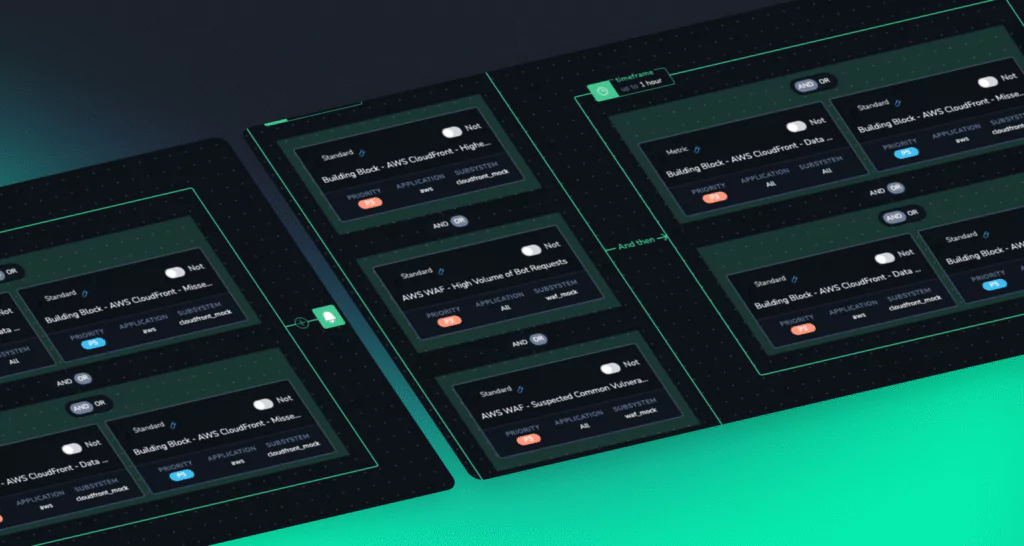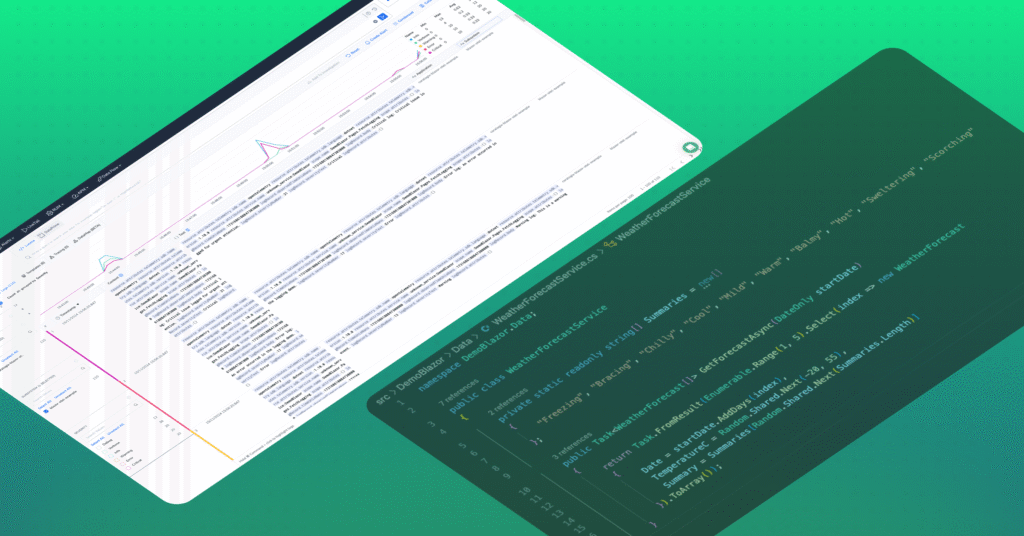Datadog pricing explained with real-world scenarios

Datadog’s pricing model is multifaceted, covering several key areas of observability. This analysis breaks down the pricing structure to help you understand potential costs for your organization.
In this article we cover:
- Breaking down the Datadog pricing puzzle
- The fine print of Datadog pricing
- Real-world Datadog pricing scenarios
- An alternative approach to Observability pricing
Breaking down the Datadog pricing puzzle
Datadog’s pricing model can lead to complex cost structures. Key Factors to consider:
- Host-Based Pricing: Costs scale with the number of monitored hosts.
- Custom Metric Costs: Each additional metric increases overall expenses.
- Log Management Expenses: High-volume log ingestion and extended retention periods can significantly impact costs.
- APM Scaling: Applications with high trace volume may see rapid cost increases.
- Feature Dependencies: Some features require others, potentially cascading your costs.
Datadog’s usage-based pricing model offers flexibility but requires careful monitoring and regular optimization to manage costs effectively.
What is a host?
A “host” typically refers to a physical or virtual machine that you’re monitoring. This could be a server, a cloud instance (like an EC2 instance in AWS), or a container host. Each host runs the Datadog agent to collect telemetry data. This is important to understand before we dive into Datadog’s pricing structure as pricing per host plays a significant role in core service pricing as per below.
The fine print of Datadog pricing
Core services pricing
Datadog’s core services form the foundation of their observability offering:
| Services | Price (per host, per month) | Notes |
|---|---|---|
| Infrastructure Monitoring (Pro Plan)* | $15 | Includes 100 custom metrics and 5 containers per host |
| Network Performance Monitoring | $5 | Add-on to Infrastructure Monitoring |
| APM | $31 | Includes 1 million analyzed spans per host and 150GB ingestion per host |
| Continuous Profiler | $19 | |
| Database Monitoring | $70 |
Product dependencies
Datadog’s pricing model includes some important dependencies between products:
- APM cannot be purchased without Infrastructure monitoring
- Security features require corresponding observability products. For instance:
- Cloud Security Posture Management (CSPM) requires Infrastructure monitoring
- Application Security Monitoring (ASM) requires both Infrastructure and APM
- Cloud SIEM requires Log Management
It’s crucial to understand these dependencies when planning your observability strategy with Datadog.
Custom metrics pricing
From information made publicly available by DataDog, it appears that custom metrics are defined as any metrics that fall outside of a set of predefined criteria laid out by DataDog. This distinction is important as it affects pricing and how you should approach your metric collection strategy.
| Metric type | |
|---|---|
| First 100 custom metrics per host | Included as standard |
| Additional custom metrics | $0.05 per metric, per month |
| High-resolution custom metrics | $0.15 per metric, per month |
Log management pricing
Log management pricing varies based on ingestion and retention:
| Service | Price |
|---|---|
| Log ingestion | $0.10 per GB ingested |
| Log indexing (7-day retention) | $1.27 per million log events |
| Log indexing (15-day retention) | Log Indexing (15-day retention) $1.70 per million log events |
| Log indexing (30-day retention) | $2.50 per million log events |
| Log rehydration | $0.03 per GB rehydrated |
Additional services pricing
Datadog’s supplementary monitoring services include:
| Service | Price |
|---|---|
| Synthetic API Tests | $5 per 1,000 API tests per month |
| Synthetic Browser Tests | $12 per 1,000 browser tests per month |
| Real User Monitoring (RUM) | $1.50 per 10,000 sessions |
These additional services can significantly enhance your observability capabilities, but it’s important to carefully consider their impact on your overall costs. Each feature adds value, but also increases your total investment in the platform.
Security Monitoring
Basic security monitoring is included in the Infrastructure plan. However advanced features like Cloud Security Management and Cloud SIEM require additional products Detailed pricing for these services is not publicly available.
Real-world Datadog pricing scenarios
Let’s examine these scenarios to understand how Datadog’s pricing works in practice:
Prometheus migration scenario (metrics-heavy)
When migrating from Prometheus to Datadog, each unique combination becomes a custom metric, potentially leading to a source of cost.
- 500 hosts with high container usage (8 per host on average)
- 250,000 custom metrics (reflecting the high cardinality often seen in Prometheus setups)
- High ingestion rate for custom metrics
- 10 million custom events per month
- All 500 hosts have APM enabled
Pricing breakdown:
- Infrastructure Pro: $90,000/year
- Additional Containers: $18,000/year
- Additional Custom Metrics: $150,000/year
- Ingested Custom Metrics $3,000/year
- Custom Events: $2,400/year
- APM costs:
- Base APM: $186,000/year
- Additional spans: $444,330/year
- Additional ingestion: $270,000/year
- Enterprise support (8%): $93,098/year
- Total: $1,256,828 per year
High log volume (500 hosts)
This scenario emphasizes heavy log ingestion and analysis:
- 500 hosts with moderate container and custom metrics usage
- 45TB of log ingestion per month
- Evenly distributed log indexing across 7, 15, and 30-day retention periods
- 20TB of log forwarding
- All logs scanned for sensitive data
- 400 out of 500 hosts have APM enabled
Pricing breakdown:
- Infrastructure Pro: $90,000/year
- Log Ingestion: $54,000/year
- Log Indexing $9,846,000/year
- Log Forwarding: $60,000/year
- Sensitive Data Scanner: $162,000/year
- APM costs:
- Base APM: $148,800/year
- Additional spans: $115,824/year
- Additional ingestion: $96,000/year
- Enterprise support (8%): $845,809/year
- Total: $11,418,433 per year
Balanced usage (500 hosts)
This scenario represents a typical enterprise setup using most of Datadog’s features:
- 500 hosts with 350 hosts having APM enabled
- 10TB of log ingestion per month, indexed with 30-day retention
- Continuous Profiler on 200 hosts
- Database Monitoring on 100 hosts
Pricing breakdown:
- Infrastructure and Containers: $102,000/year
- Custom Metrics: $24,480/year
- Log Management: $312,000/year
- APM costs:
- Base APM: $130,200/year
- Additional spans: $101,346/year
- Additional ingestion: $84,000/year
- Continuous profiler: $45,600/year
- Database Monitoring: $84,000/year
- Enterprise support (8%): $70,690/year
- Total: $954,316 per year
Note: It’s important to realize that Datadog’s APM pricing charges per host, plus additional charges for spans and ingestion beyond the included amounts. This tiered pricing model is another potential source of cost.
Coralogix: An alternative approach to Observability pricing
For comparison, let’s examine Coralogix’s pricing model:
- Volume-based pricing covering logs, metrics and traces
- No per-host fees
- Pricing based on data ingestion and retention
Streama: A game-changer for cost efficiency
Coralogix’s Streama technology delivers:
- Optional indexing for real-time analytics
- Intelligent data routing
- Serious cost savings (up to 70% less than traditional methods)
- Faster query performance
Additional Coralogix features:
- Unified observability of logs, metrics and traces
- APM, RUM, SIEM, Infrastructure Monitoring and more included at no extra cost
- Built-in cost optimization tools
- Direct archive queries without reindexing or rehydration
- AI-powered insights
- Custom dashboards
- 24/7 support at no extra cost
Pricing comparison example
Scenario: 500 Hosts, 5TB logs daily, using 40,000 custom metrics and generating 750 million spans monthly, a 30 day log retention is also required with enterprise support.
- Coralogix estimated cost: $234,000/month.
- Datadog estimated cost: $446,499/month.
Note: Actual costs may vary based on specific usage patterns and negotiated rates.
In this Scenario, Coralogix offers significant savings, approximately 43% lower that Datadogs’s estimated cost.
Key observations
- Pricing Model: Datadog uses a host-based pricing model with additional charges for high usage, while Coralogix offers volume-based pricing. This fundamental difference can lead to significant cost variations depending on infrastructure and usage patterns.
- Log Management: Log indexing is often the highest cost contributor for Datadog, especially in scenarios with high log volumes and extended retention periods. Coralogix’s TCO Optimizer provides substantial savings on log costs, which is a major factor in the cost difference between the two platforms.
- Custom Metrics: Costs can be significant, particularly when migrating from systems like Prometheus that generate high-cardinality metrics. Datadog includes a base allowance of custom metrics per host, which can be advantageous for some setups. However, in high-volume scenarios, Coralogix’s unified pricing model provides better value.
- APM (Tracing): Both platforms offer comparable tracing capabilities, but with different pricing structures. Datadog charges per host plus overage, while Coralogix’s pricing is purely volume-based. APM costs can significantly impact the total cost, especially in scenarios with high trace volumes or ingestion rates.
- Scalability: Coralogix’s volume-based pricing offers more predictable costs as you scale, especially for containerized or serverless environments where host count can fluctuate. Datadog’s host-based model might require more careful planning as you scale.
- Product Dependencies: Datadog’s offering can lead to cascading costs due to feature dependencies. For example, enabling certain security features necessitates the purchase of related observability products.
- Enterprise Support: Datadog’s enterprise support (at 8% of annual contract value) adds a significant amount to the total cost, which should be factored into comparisons. It’s important to consider the support offerings and their costs for both platforms.
Conclusion
Both Datadog and Coralogix offer comprehensive observability solutions with different pricing models. Datadog provides granular control but with potential pricing complexity, while Coralogix emphasizes simplicity and cost-optimization, allowing you to scale with confidence.
The best choice? It depends on you. Consider your needs, your usage, and yes, your budget. But don’t just look at the price tag. Think about features, usability, support, and how it’ll grow with you.
Remember, the goal is to understand your systems, not to give yourself a headache. Choose wisely, plan carefully, and keep optimizing. Your future self will thank you.




